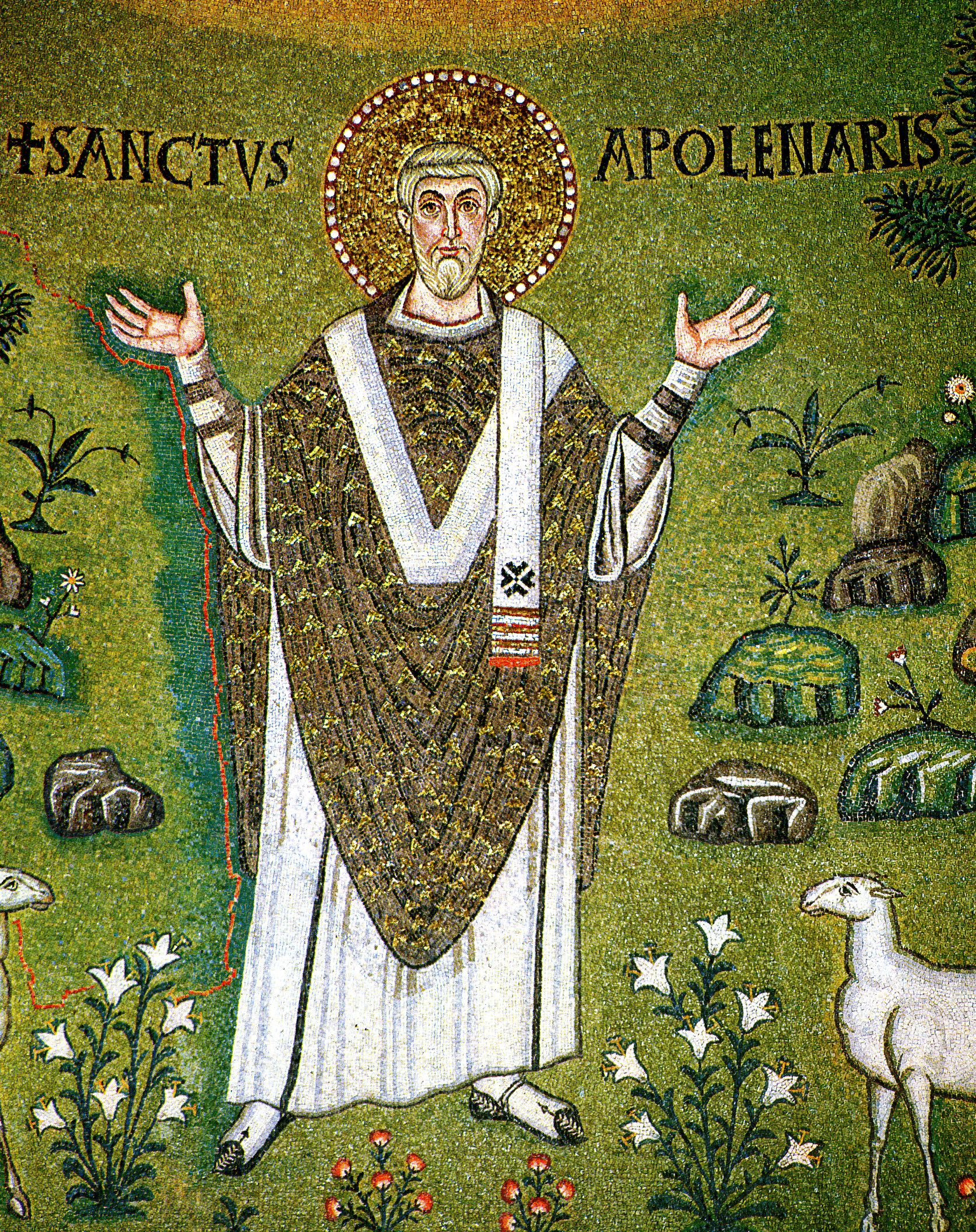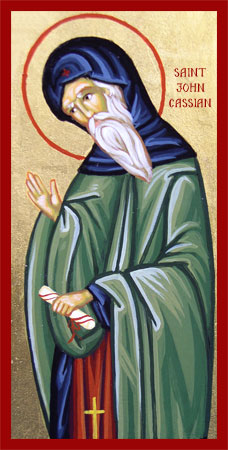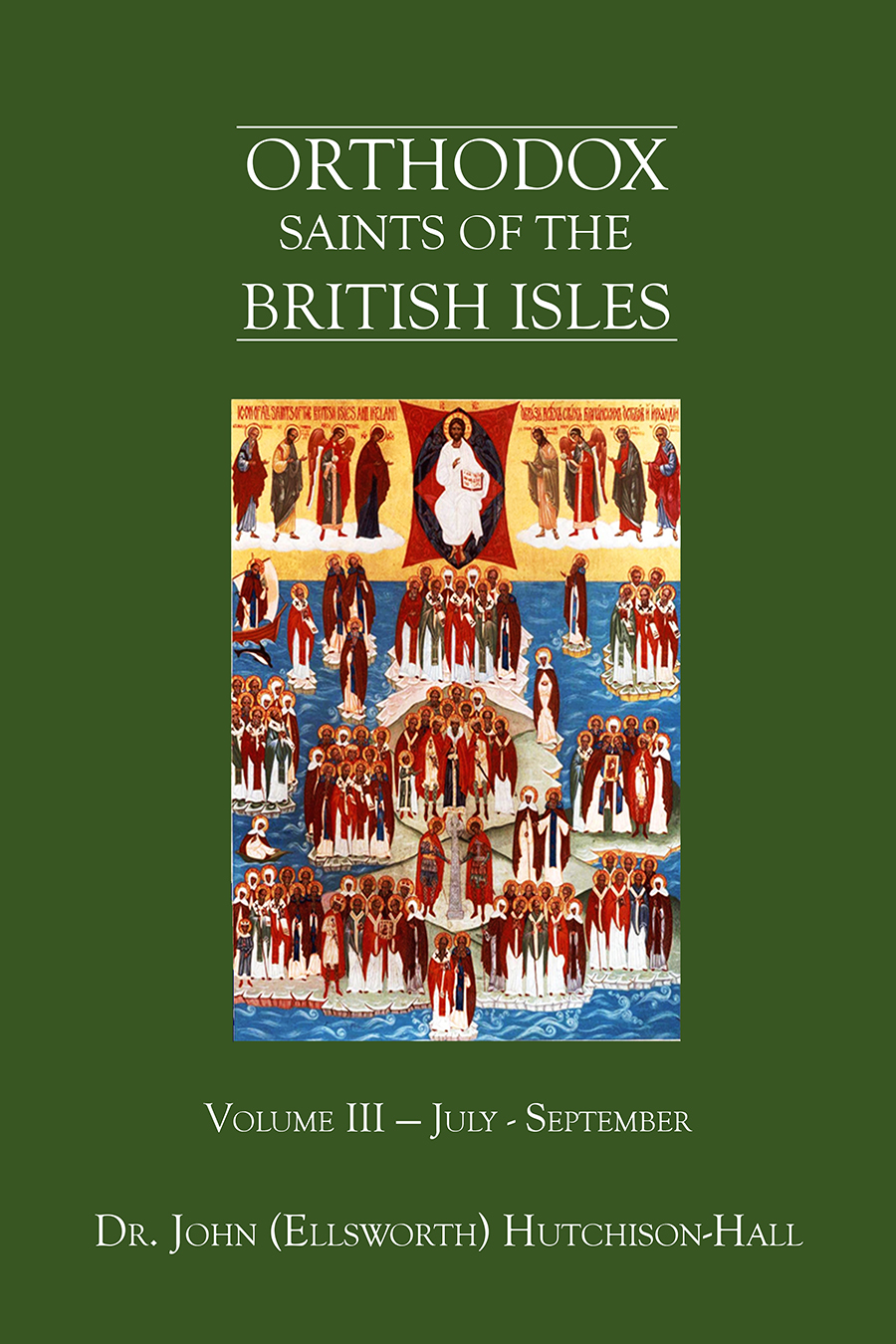
Orthodox Saints of the Pre-Schism
See of Rome
6th July (NS) — 23rd June (OS) 2023
APOLLINARIS of RAVENNA, (First Century), according to tradition, St. Apollinaris was a disciple of the St. Peter the Apostle (29th June), who consecrated him the first Bishop of Ravenna in Italy. He was also a noted wonderworker. St. Apollinaris served the people of Ravenna for twenty-six years, all the while being subjected to many cruel tortures for his refusal to renounce Christ. St. Apollinaris was martyred circa 79 at Ravenna, his relics are enshrined at the Abbey of St. Apollinaris in Classe, just outside of Ravenna.
APOLLONIUS and EUGENE of ROME, (Date Unknown), the metrical Calendar of Dijon mentions these two martyrs, who were sentenced to die for being Christians. St. Apollonius was tied to a stake, and he was then shot to death by arrows. St. Eugene is said to have dauntlessly placed his neck on the executioner's block. No further information on these saints is extant.
CONAN of CORNWALL, an early Bishop of Cornwall, England, St. Conan was appointed to the See by Æthelstan, King of England (r. 924–939). From the limited information extant it appears he was consecrated sometime between July 924 and 932, though 20th century British historian D. P. Kirby, is of the opinion that it is almost certain St. Conan was consecrated in 936. St. Conan served as bishop until his repose sometime between 946 or 953 and November 955.
JOHN CASSIAN, following an extended time amongst the monks in the deserts of Egypt, where he received monastic tonsure, St. John travelled to Marseilles (southern France). While on his way to Marseilles, St. John spent time studying under St. John Chrysostom, who ordained him to the Diaconate. Once in Marseilles St. John established the Abbeys of St. Victor for men, and Saint-Sauveur for women. However, St. John is undoubtedly best remembered for his writings especially the Conferences and Institutes, which were highly praised by St. Benedict (11th July). There is some debate as to the year of St. John Cassian’s repose, ranging from 434-435 to 440-458.
LIBORIUS of LE MANS, the second Bishop of Le Mans (north-western France) from 348 until his repose circa 390. St. Liborius is the patron saint of Paderborn, Germany where his relics were translated in 836, and enshrined in the Cathedral of SS. Maria, Liborius, and Kilian.
PRIMITIVA of ROME, beyond the her name and Rome as the location or her martyrdom, there is absolutely no information on St. Primitiva extant. It is also very possible this saint is the same as the St. Primitiva whose feast is commemorated on (24th February)
RASYPHUS and RAVENNUS of MACÉ, (Fifth Century), natives of Britain who fled their country during the Anglo-Saxon invasions, settling in Normandy (northern France) where they lived as anchorites. They were martyred in Macé, and their relics are enshrined in Bayeux.
RASYPHUS of ROME, (Date Unknown), a martyr of whom nothing is known, but has been venerated in Rome since time immemorial.
ROMULA, REDEMPTA, and HERUNDO of ROME, hermitesses in Rome. Their life of self-denial so affected Pope St. Gregory the Dialogist (3rd September) that he based one of his still extant sermons on them. SS. Romula, Redempta, and Herundo all reposed circa 580.
TROPHIMUS and THEOPHILUS of ROME, two martyrs in Rome during the Diocletianic Persecution, circa 302.
VALERIAN of CIMEIZ, a monk at the Abbey of Our Lady of Lérins (abbaye Notre Dame de Lérins) on one of the Lérins Islands in the Mediterranean Ocean off the Côte d’Azur in France. who served as Bishop of Cimeiz (part of present-day Nice France) in the middle of the fifth century. The exact dates St. Valerian served as bishop are unknown, however, he is listed amongst the attendees at the Councils of Riez in 439 and Vaison in 442. St. Valerian reposed circa 460.
Get your copy of Orthodox Saints of the British Isles today.
Available at Amazon or your favourite e-bookstore.
DOMINICA of CAMPANIA, (Date Unknown), a maiden martyred, during the Diocletianic Persecution (303–313) for destroying pagan idols. Her relics are enshrined in the Cathedral of St. Mary of Romania in Tropea, Calabria, Italy
GOAR of AQUITAINE, a priest from Aquitaine (south-western France), who following several years as a parish priest left Aquitaine and to live as a hermit near Oberwesel on the Rhine. The present-day town of Sankt Goar-Oberwesel in Rhineland-Palatinate, Germany grew up around the site of his hermitage. St. Goar reposed circa 575.
MONENNA (DARERCA), an early Irish ascetic and abbess believed to have received monastic tonsure from St. Patrick of Ireland (17th March). St. Monenna was foundress of several monasteries in Scotland and England, as well as, one in Faughart, Co. Louth, Ireland. She finally settled at Cill Shleibhe (Killeavy), Co. Armagh, Ulster, with eight virgins and one widow, who brought her son, who went on to become a bishop. This community lived a semi-eremitical life. St. Monenna reposed at Cill Shleibhe in 518 and is believed to have been buried on the northern side of the cemetery at Killeavy Old Church. This site is marked by a large granite stone measuring 2.1 by 1.5 metres (6.9 by 4.9 feet). There is also a shrine nearby at the site of her holy well.
NOYALA of BRITTANY, (Date Unknown), believed to have been a native of Britain, St. Noyala was beheaded by robbers at Bignan in Brittany (northern France). She is one of the saints classed as a cephalophore, or head-carrier, as according to tradition, St. Noyala carried her head from the place of her martyrdom some 25 km (16 mi) north to Pontivy where the Sainte-Noyale Chapel is now located. St. Noyala is also remembered in Cornwall, England, by the name of the village of St. Newlyn East.
ROMULUS of FIESOLE and COMPANIONS, according to tradition St. Romulus was ordained by the Apostle Peter (29th June) and charged with evangelising the area around Florence (Tuscany, central Italy). St. Romulus is counted as the first Bishop of Fiesole, just outside of Florence, and was martyred with several companions during the reign of the Emperor Domitian (r. 81–96).
SEAXBURH (SEXBURGA, SAXBURGH) of ELY, the daughter of Anna, King of the East Angles (r. 635/6–c. 654), sister of SS. Æthelthryth (23rd June), Æthelburh (7th July) and Wihtburh (8th July) and half-sister of St. Sæthryth (10th January). She married King Eorcenberht of Kent (r. c. 640–664) and amongst their children were SS. Eormenhild (13th February) and Eorcengota (21st February). Following the repose of her husband in 664, St. Seaxburh received monastic tonsure and founded the abbey at Minster-in-Sheppey, serving as its first abbess. In 679, she retired and moved to her sister St. Æthelthryth’s monastery at Ely, where she was chosen Abbess upon the repose of her sister. St. Seaxburh served as Abbess of Ely until her repose circa 699.
TRANQUILLINUS of ROME, said to have been brought to Christ by St. Sebastian (20th January). St. Tranquillinus was the father of SS. Mark and Marcellian (18th June). He was found praying at the tomb of the Apostle Paul (29th June), and stoned to death circa 288.
Prior to the Schism the Patriarchate of Rome was Orthodox, and fully in communion with the Orthodox Church. As Saint John of Shanghai and San Francisco +1966 said “The West was Orthodox for a thousand years, and her venerable Liturgy is far older than any of her heresies”.
Details of British Saints excerpted from Orthodox Saints of the British Isles.
Details of continental saints from these sources.
In many cases there are several spelling versions of the names of saints from the British Isles. I use the Oxford Dictionary of National Biography version as the primary version with the more prevalent version in parenthesis e.g. Ceadda (Chad) of Lichfield.



